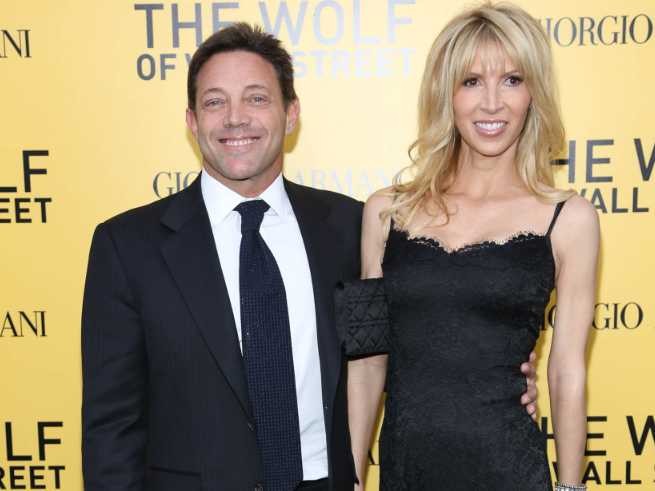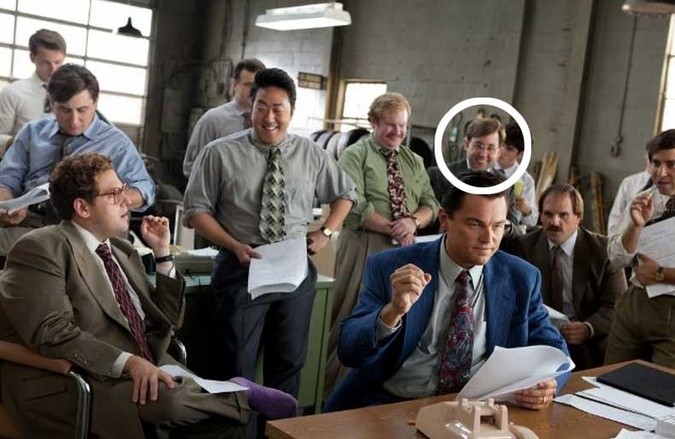The Real Wolf of Wall Street
Post on: 30 Май, 2015 No Comment

I have seen the movie The Wolf of Wall Street and enjoyed it quite a lot, though that loud brash generation is more muted these days. But it made me wonder, have we seen the last of the scam artist investor?
During the recent testimony of Bernie Madoff’s long time assistant, Annette Bongiorno, she said that she thought of him as a big brother and trusted him without question. As long as we have blind trust in our investment partners, and a good measure of greed, we are always going to have con artists like Jordan Belfort and Bernie Madoff.
These con men have three things in common: 1) they believe they are invincible; 2) they believe they are smarter than the system and can game it; and 3) they are obsessed with climbing the greasy monetary pole of status as quickly as possible. I have seen many investors fall in love with any investment manager who can make them money, and they turn a blind eye to the lack of any underlying substance.
Bernie Madoff created and oversaw the largest Ponzi scheme in history, which defrauded clients of $65 billion over a period of some twenty-five years. His returns had been astonishing. I first encountered him in 2004, while a looking over some potential investment documents for a client in London.
The Kingate Fund document I was looking at was a year old then but showed that he had made over 13 percent a year with a volatility of less than 3 percent since 1995. To put it in perspective, his performance was about five times better than that of the global stock indices over that period and about the same as the general hedge fund index but with less than a third of the risk.
Bernie’s pedigree was impeccable. He had founded his firm in the 1960s and grown it into one of the leading market makers on Wall Street. He had helped set up the NASDAQ and served as its nonexecutive chairman. His clients included large foundations, funds, endowments, and well-known individuals, all of whom had extrapolated the above into an abdication of judgment. Many could tell you happily that he had been probably their best investment for the last five, ten, fifteen years. The Kingate Fund alone had some $2.4 billion invested with him.
Madoff’s modus operandi had always been never to take any money directly. Rather, funds such as Kingate that allocated exclusively to him through a personal managed account functioned as feeders, funneling ever-increasing amounts of money into the Ponzi scheme and reaping rich fees in the process. They provided a necessary veneer of credibility—the Kingate analysis came from the Hedge Alternative Advisory Group at HSBC Republic and the auditors were Coopers and Lybrand, soon to form part of PriceWaterhouseCoopers, one of the Big Four accountancy firms. In later years, as I saw materials from other Madoff feeders, the descriptions of the strategy, analysis, and accouterments of respectability were so similar as to be almost cut-and-paste jobs across the industry.
Meanwhile, the money came in, went straight into a Chase Manhattan bank account, and stayed there. Fictitious trades were created and executed, and profits (invariably) were entered into fictitious accounts. If anyone wanted any money back, Bernie simply withdrew it from the bank and wired it over. Luckily, not many people ever did, as his performance was so stellar. Instead, they further increased their allocations to his fund, as the ease of access to their money confirmed their view that Bernie was a reliable cash machine.
Madoff’s reputation, pedigree, and returns combined in the alchemy of investor psychology to make him gold. He was also aloof, rarely meeting people and refusing to even attend conference calls. Investing in Bernie was a privilege extended only to the chosen few. He was one of those mysterious all-important hedge fund titans whose returns needed no explanation. Michael Bienes, who ran one of the feeder funds, noted in the aftermath of Madoff’s downfall, Doubt Bernie Madoff? Doubt Bernie? No. You can doubt God, but you don’t doubt Bernie.
The Ponzi scheme only fell apart following the credit crunch in 2008 as cash-strapped investors desperate for liquidity went to the only functioning ATM many of them knew: Bernie Madoff. But $7 billion of redemption requests later, Bernie threw his hands up in the air and the authorities promptly handcuffed them on the way down.
In hindsight, the signs were very clear to everyone. He was secretive and refused to discuss his strategies. The numbers were too good to be true. The investment advisory business ran alongside a major broker — dealer — a clear conflict of interests. The auditor was an unheard-of firm, Friehling & Horowitz, with precisely three employees and only one accountant. All the entities involved in the strategy were directly or indirectly controlled by Madoff. Trades were always provided to investors in paper format only, with no access to electronic files. The days on which the trades were reported to have occurred did not show the required liquidity to execute the strategy. Madoff only registered with the Securities and Exchange Commission in 2006, despite having run his strategy for many years previously.
Shortly after Madoff’s fall I was e-mailed a long list of these red flags by a hedge fund manager who proudly proclaimed that he had already positioned himself to respond to the new challenges faced by the hedge fund industry. He clearly didn’t do a very good job — he was fined $5 million by the Financial Services Authority in the United Kingdom and banned for life in May 2012 for concealing losses of $390 million from his investors in late 2008.

Back in July 2004, I did not have the hindsight of experience, only the rube’s privilege of no preconceptions. A simple analysis showed that the numbers were remarkably distributed. The losing months over all this period from March 1995 onward could be counted on the fingers of one hand and the first one ever had occurred in January 2002, eighty-two months into the fund’s history. The probability of his being so good was so remote that you felt perhaps you were doing Bernie a disservice by suggesting that such laws of nature might apply. Bernie was the Babelfish of finance.
I’ve learned over the years that good due diligence comes down to asking three fundamental questions about fund managers: How do they make money? Why do they make money? How do they avoid losing the money they’ve made?
In Bernie’s case, the answers were: I don’t understand. He must be blessed by God. What’s losing money?
Too risk-averse, the firm I worked for passed on the Kingate Fund opportunity and never made it to the next, more detailed round of due diligence. Would we have picked up on the red flags everyone identified afterward? I’d like to hope so, but it’s hard to say. Back then, if anyone took a fund forward, the second round was seen as largely confirmatory, as opposed to a genuine investigation. Many managers were big swinging dicks, their strategies were black boxes, and you were buying into the club. The gut reaction for most investors was to just say yes and pony up, because you wanted those returns, particularly in the aftermath of the punishing equity losses caused by the bursting of the dot-com bubble.
In many ways, investors were just relearning the lessons imparted by Ivar Kreuger, the infamous Match King, who had a mansion in every major city in the 1920s and swindled his investors out of billions during the Great Depression. Madoff was but the latest incarnation to demonstrate our ability to cherry-pick and interpret facts to suit our views of the world. He showed the pitfalls of blind optimism and willful extrapolation, particularly when we are jostling to get to the front of the crowd. Most of all, it was a powerful demonstration of our recurring ability to reduce the complexity of finance into simple mental shortcuts that engineer manias when enough of us get together.
The most important shortcut: trust.














